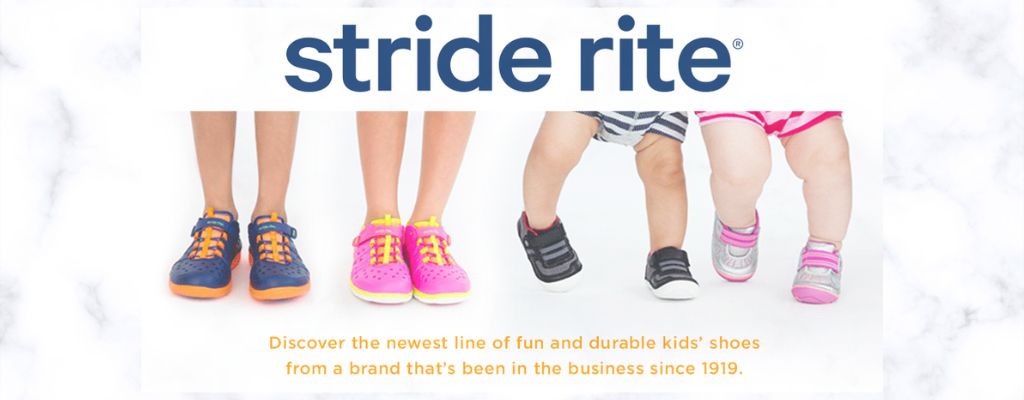What is Stride Rite?
Stride Rite is a children’s footwear company that manufactures shoes and boots for infants, toddlers, and young children. They have a wide range of shoes and boots to choose from, including waterproof boots, slip-resistant shoes, and shoes with comfort inserts. Stride Rite also offers a variety of colors and patterns to choose from.
History of Stride Rite
In 1927, two brothers, David and Charles Stride, started a business in their parents' garage in Yonkers, New York. The Stride brothers invented the first ever athletic shoe - the sneakers.
In 1948, Stride Rite became a publicly traded company and began manufacturing athletic shoes for both men and women. Today, Stride Rite is one of the world's leading athletic footwear companies, with more than 2,000 employees around the world.
Stride Rite makes a wide variety of shoes for both children and adults, including running shoes, cross-trainers, sandals, and slip-on style shoes. The company also manufactures sports equipment such as basketballs and volleyballs.
Stride Rite operates two factories - one in England and one in Spain.
How long have they been around?
The Children's Footwear Industry has been around for over 100 years.
Origins of Stride Rite Shoes
The company's origins date back to 1901, when brothers Morris and Arthur Levine began manufacturing shoes in their family's synagogue workshop in Newark, New Jersey. The Levines soon became one of the country's leading manufacturers of children's shoes.
In 1934, the brothers opened a new factory in Elizabeth, New Jersey, which would eventually become Stride Rite's global headquarters.
During World War II, Stride Rite manufactured military-grade shoes for soldiers and airmen. The company also produced shoes for civilians who needed a safe and durable footwear option during the war time.
After the war, Stride Rite continued to grow and diversify its product line. In 1959, the company introduced its first women's shoe line and in 1960, it became the first company to introduce sneakers for children.
Today, Stride Rite remains one of the world's leading manufacturers of children's sneakers and footwear.
Where do their shoes come from?
Nowadays, children's footwear is made in a variety of countries around the world. The development of the Children's Footwear Industry has seen many shoe manufacturers move their operations to countries where labor is cheaper and regulations are more lenient. In recent years, China has become the leading producer of children's shoes, followed by Mexico and Vietnam.
The factories that produce shoes for children are typically smaller and less efficient than those used to produce adult footwear. This means that child labor is often used in these factories. In some cases, young children as young as six are employed in dangerous work environments, including working long hours with no safety precautions in order to meet deadlines.
There are organizations such as The Coalition for Ethical Fashion (CEF), which aim to eliminate child labor from the Children's Footwear Industry by raising awareness and advocating for better working conditions for children in the production of footwear. There are also initiatives such as The Child Labor Eradication Project (CLEP) which provide training and resources to help businesses rid their supply chains of child labor.
Where do the factories that make their shoes exist?
Footwear industry can be traced back to 17th century when shoemakers started to make footwear for the upper class. However, the industry took off in the mid-19th century with the invention of the machine that could stitch a pair of shoes in a single operation- thus doubling the output. The industry continued to grow with the advent of new machines and materials such as rubber, which made shoes waterproof and more durable. In the early 1900s, women started buying shoes for themselves, and by World War I, there were more shoe factories than ever before.
The industry continued to grow through World War II, as manufacturers turned to making military boots and shoes for the Allied forces. However, after the war, there was a shift away from heavy military gear towards lighter sneakers and athletic shoes. This shift was helped along by television commercials that targeted young people with their catchy jingles and images of celebrities wearing Nike sneakers.
As of 2010, there were over 26,000 footwear factories in China alone- making it by far the largest producer of shoes in the world. Other major producers include India, Mexico, Indonesia, and Vietnam. However, despite being one of the most lucrative industries in the world, apparel
How many people are employed by them in North America, Europe and China?
The Children's Footwear Industry employs over 1 million people in North America, Europe and China combined. What is the overall economic impact of their business?. The Children's Footwear Industry contributes over $6 billion to the U.S. economy each year, including $2 billion to North American manufacturing, $3.5 billion to North American retail sales and over $1 Billion through export trade by both companies and independent producers.
What industries are they involved in?.
The Children's Footwear Industry includes companies such as Crocs®, Converse®, Dr. Scholl's®, Kangol® and Vans®; these companies make and sell products that include shoes, sandals, slippers, boots and accessories for sports & leisure activities such as cheerleading, gymnastics and dance classes.


